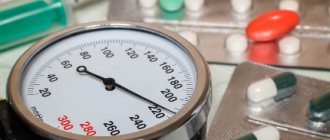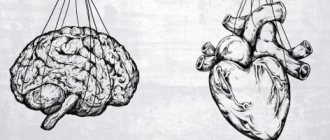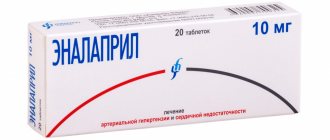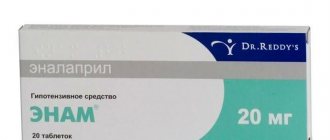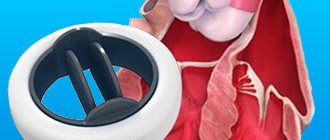Arterial hypertension of the 3rd degree is characterized by an increase in systolic pressure up to 180 mm R. Art. and diastolic – above 110 mm Hg. Art. In this case, blood pressure constantly exceeds the permissible norms and does not return to normal levels without drug treatment. The causes of stage 3 hypertension are varied: abuse of bad habits, obesity, sedentary lifestyle, endocrine disorders, hereditary predisposition.
The disease is accompanied by pronounced symptoms, which should be a reason to immediately visit a cardiologist. Treatment of the pathology is complex and carried out under the strict supervision of a specialist. Lack of therapy leads to serious complications affecting the heart, kidneys, brain, and visual system.
Degrees of hypertension and their characteristics
Arterial hypertension is a severe pathology, accompanied by an increase in blood pressure and the progression of associated complications. If the disease is advanced to stage 3, it is impossible to completely cure it, because the patient’s body is already accustomed to consistently elevated blood pressure. All his systems were rebuilt in a pathological way, regulating the processes of narrowing and dilation of blood vessels in a way that is not necessary.
Depending on the nature of the course and the degree of damage to the body, there are 3 stages of hypertension:
- First degree. The mild stage is characterized by an increase in tonometer readings to 140 – 159/90 – 99 mm Hg. Art. The course of the disease is unstable, accompanied by periods of remission and exacerbation. If you start treatment at the first stage, you can completely get rid of the disease and prevent its progression. Therapy consists of lifestyle changes and rarely involves the use of medications.
- Second degree. At this stage, the pressure rises to 160 – 179/100 – 109 mm Hg. The disease begins to manifest itself with pathological symptoms: painful headaches, discomfort and pain in the heart area, shortness of breath, dizziness, tremor. The second stage is dangerous because internal organs, especially the eyes, are involved in the pathological process. Treatment is only medicinal, under the strict supervision of a doctor. It is impossible to get rid of the pathology at stage 2, but by following the basics of a healthy lifestyle and undergoing preventive drug treatment, you will be able to achieve remission and return to normal life.
- Third degree. Blood pressure reaches 180/110 and higher. The patient's condition is defined as serious, requiring urgent medical attention. At the third stage, the vessels experience serious stress, and the cardiovascular system undergoes irreversible pathological changes. If high blood pressure is not stopped, the risk of developing myocardial infarction, acute heart failure, angina pectoris, arrhythmia and other complications increases. Also at this stage there is a high risk of a hypertensive crisis, in which the pressure rises sharply and all the symptoms of hypertension worsen. To control the condition, the patient is forced to constantly take hypertensive medications prescribed by the doctor.
How does the development of hypertension affect the body?
Hypertension systematically destroys blood vessels, narrowing the lumens. But its effect on the body is not limited to this. First of all, the disease affects target organs:
Classification of arterial hypertension
- heart;
- kidneys;
- brain;
- eyes.
The disease affects the heart by dilating the left ventricle. At the same time, the elastic properties of the myocardium decrease, the walls thicken, which over time leads to the development of heart failure. The risk of heart attack increases.
The kidneys must be fully supplied with blood. If the pressure is constantly high, the blood supply deteriorates, the kidneys do not receive nutrients, and their functions are impaired. At this stage of hypertension, renal failure is often diagnosed.
The brain suffers no less. Sclerotic changes reduce the tone not only of blood vessels, but also of intervertebral arteries. The brain stops receiving the necessary dose of oxygen and nutrients. Against the background of this condition, memory, attention, and intelligence deteriorate, encephalopathy develops, blood clots form, and the likelihood of a stroke increases.
Many patients of cardiologists are faced with such a complication of hypertension as retinal damage. Vessels burst, visual acuity decreases, and a feeling of chronic fatigue appears with minimal stress on the visual organs.
No ads 1
Risks 1-4 with end-stage hypertension
Depending on the likelihood of developing complications that threaten the health and life of the patient, in cardiological practice there are 4 risk factors, each of which has its own characteristics and course.
Risk 1 (low)
It develops extremely rarely in stage 3 arterial hypertension. It is often diagnosed in patients who have just encountered pathology. Timely treatment and lifestyle adjustments help control the condition and prevent more serious complications. With hypertension occurring at the last stage, such a condition is in principle impossible, because the disease makes itself felt all the time and is almost always unpredictable.
Risk 2 (medium)
The average risk is also uncharacteristic of hypertension, which occurs at stage 3. In this case, the risk of developing complications from the cardiovascular system, as well as damage to target organs, does not exceed 10–12%. Medium risk is more common in stage 1–2 arterial hypertension, subject to the presence of several factors, under the influence of which the outcome of the disease may worsen.
Risk 3 (high)
The high risk of hypertension indicates that the risk of developing cardiovascular complications and target organ damage increases significantly. The probability of death in this case is 15–25%.
To maintain the life and health of the patient, regular drug therapy and lifestyle changes are necessary. A grade 3 risk is still not a death sentence, but it is no longer an indication of a favorable outcome of the disease.
Risk 4 (extremely high)
Risk 4 for stage 3 hypertension is the most likely picture of the course of the pathology at this stage of progression. The probability of severe complications and death is in the range of 30–50% or higher. Complex drug therapy and regular blood pressure monitoring will help reduce the rate to 25–30%, but doctors will not be able to guarantee one hundred percent survival.
At extremely high risks, severe complications develop, accompanied by damage to target organs. The therapy regimen is changed regularly, on average 2–4 times a year. During the treatment period, the patient is indicated for hospitalization. In a hospital setting, the doctor will be able to monitor the dynamics of treatment and, if necessary, make adjustments.
At President-Med clinics you can
- undergo examination and treatment in more than 30 medical specialties, rehabilitation after strokes, surgeries, injuries,
- pass various types of tests (more than 5,000 types of tests and laboratory tests),
- undergo functional diagnostics (ultrasound, endoscopy: gastroscopy), ECG, installation and interpretation of ABPM and Holter ECG and others,
- pass a medical examination in one day, undergo a medical examination (for both organizations and individuals), undergo a medical examination (for both organizations and individuals),
- obtain all kinds of certificates - certificates from the traffic police and for admission to sports, to purchase weapons, to a sanatorium,
- if there is evidence, issue a certificate of temporary incapacity for work,
- draw up and receive other types of medical documentation,
- make any injections,
- use the services of one-day surgery or day hospital.
Causes
The causes of hypertension are varied. Depending on the etiology, primary and secondary forms of hypertension are distinguished, the nature of which is significantly different.
Primary form
It is diagnosed in 50–60% of patients suffering from this type of disease. The disease develops against the background of damage to the heart muscle and blood vessels. Other internal organs do not participate in the development of pathology.
Primary hypertension is often a complication of such previously suffered diseases:
- Myocardial infarction. The attack is accompanied by an acute circulatory disorder in the heart muscle. After hospitalization and emergency medical care, the development of pathology can occur in 2 scenarios: the pressure will decrease or, conversely, increase.
- Acute or chronic heart failure. It occurs against the background of disruption of the heart muscle, which is unable to pump blood with sufficient intensity. Myocardial ischemia and infarction are common complications of acute or chronic heart failure.
- Ischemic disease. It often develops together with heart failure, and both pathologies have similar symptoms.
- Atherosclerosis of the aorta and its branches. It develops against the background of blockage of blood vessels by fatty plaques or persistent stenosis of the blood supply structures. To compensate for the resistance caused by the blockage of the vessel, the heart is forced to work harder. This leads to a stable increase in blood pressure and the development of chronic hypertension. But if you remove lipid deposits, your health will noticeably improve.
Secondary arterial hypertension
Secondary arterial hypertension develops against the background of other diseases and damage to internal organs. Common causes of its occurrence:
- hyperfunction of the thyroid gland;
- hypercortisolism;
- kidney pathologies: pyelonephritis, chronic renal failure, glomerulonephritis, cancer;
- osteochondrosis, vertebrobasilar syndrome;
- decompensated diabetes mellitus.
Make an appointment with a doctor
The conclusion of the Expert Council demonstrates the relevance of introducing a new risk category for cardiovascular complications - an extreme risk category. The studies on the basis of which this risk category is identified are presented. The extreme category of risk for patients includes the following: a combination of clinically significant cardiovascular disease caused by atherosclerosis with type 2 diabetes mellitus or familial hypercholesterolemia, a cardiovascular complication in a patient with cardiovascular disease caused by atherosclerosis, despite optimal lipid-lowering therapy and/or achieved low-density lipoprotein cholesterol level ≤1.5 mmol/l. The Expert Council's opinion describes the management of such patients, emphasizing not only the need to achieve target levels of low-density lipoprotein cholesterol, blood pressure and glycosylated hemoglobin, but also the use of drugs proven effective in reducing cardiovascular risk.
Introduction
Mortality from cardiovascular diseases (CVD) is much higher than that from infectious and oncological diseases. The World Health Organization (WHO) estimates that 17.5 million people worldwide died from CVDs in 2012, accounting for 31% of all global deaths. Of this number, 7.4 million (42%) died from coronary heart disease (CHD), 6.7 (38%) million from stroke. According to WHO estimates, by 2030, about 23.6 million people will die annually from CVDs. The annual overall mortality of the population is, according to various sources, 1.2–2.4%, while cardiovascular mortality (CVM) is 0.6–1.4%, the incidence of non-fatal myocardial infarction (MI) is from 0.6 (according to the RITA-2 study) to 2.7% (according to COURAGE). At the same time, in very high-risk patients, the annual mortality rate increases to 3.8%, while in persons with hemodynamically insignificant atherosclerosis of the coronary arteries, the mortality rate is at the level of 0.63% (data from the REACH registry). CVD is the leading cause of death in the Russian Federation, contributing 57% to overall mortality. CVD is also the most common cause of hospitalization and disability in the Russian population. The economic damage from CVD in the Russian Federation is about 3% of the country's gross domestic product. The mortality curve from CVD in the Russian Federation has a wave-like shape: from 1991 to 1994 it increased from 621 to 836 cases per 100 thousand population, then there was a decline to 747 cases in 1998, after which the mortality rate increased again to 927 cases in 2003. From then to the present, there has been a relatively stable trend towards a decrease in mortality from CVD, which in 2013 amounted to 698.1 cases, in 2014 – 653.7 per 100 thousand population. However, these indicators are still among the highest in the world, exceeding similar indicators in developed countries by 4–6 times [1]. Therefore, an important point remains the individualization of approaches to the correction of risk factors depending on the severity of the disease. In this regard, it is advisable to introduce a fifth risk category, which will make it possible to justify and carry out the most intensive treatment using drugs that have proven their influence on achieving not only certain parameters and indicators, but also significantly reducing the risk of cardiovascular complications ( MTR). It is proposed to call such a group an extreme risk group (ER). Thus, patients can be divided into five risk categories - low, moderate, high, very high and extreme.
Rationale for introducing the ER category
As is known, the category of very high CVD risk includes a fairly broad category of patients, among which there are patients with the presence of several pathologies, each of which falls under this category [2]. There is no doubt that their combination significantly increases the risk of complications. This dictates the need to identify an additional category, which is proposed to be defined as the ER group. This will make it possible to introduce more stringent requirements for the control of risk factors for these patients, which should have a positive effect on the incidence of cardiovascular events and mortality in this most severe category.
Indeed, at present, both a patient with IHD and a patient who has a combination of IHD with type 2 diabetes mellitus (T2DM) and circulatory failure can be classified as a very high risk category. However, the cardiovascular risk (CVR) in the second case is undoubtedly much higher. In particular, the combination of T2DM with CVD significantly worsens the prognosis. In this regard, recently in the treatment of T2DM there has been a transition from a “glucocentric” approach to more global tactics, with the main goal of reducing the incidence of cardiovascular events [3]. It is not so much the absolute levels of fasting plasma glucose and the level of glycosylated hemoglobin (HbA1c) that become important, but the safety of the drugs used in a particular case and their ability to reduce the incidence of cardiovascular events. This approach is similar to what was previously proposed to combat arterial hypertension: what is important is not so much the antihypertensive effect of therapy itself, but its effect on cardiovascular risk [4]. In 2021, the National Atherosclerosis Society (NSA) proposed stricter low-density lipoprotein (LDL) cholesterol targets. In very high-risk patients, the target LDL level should be 1.5 mmol/L or lower [2]. This LDL level can also be one of the target indicators of therapy for patients with ER.
The ER category was officially identified in the 2021 guidelines by the American Association of Clinical Endocrinologists and the American College of Endocrinologists (AACE) [5].
In these recommendations, patients with the following conditions are classified as ER:
- Progression of CVD caused by atherosclerosis, including unstable angina in patients with LDL levels less than 1.8 mmol/l.
- Clinically significant CVD in patients with diabetes, chronic kidney disease (CKD) stage 3–4. or with heterozygous familial hypercholesterolemia (heFH).
- Development of CVD in men under 55 years of age or women under 65 years of age.
In table 1 presents the gradation of risk categories and treatment tactics proposed in these recommendations.
As follows from the table. 1, the definition of risk categories is somewhat different from that presented in the 2021 NOA Recommendations. Taking into account their existing Russian recommendations for the correction of lipid metabolism disorders and based on a number of clinical studies described below, the following definition of ER for the Russian population is advisable: combination of clinically significant CVD caused by atherosclerosis with T2DM and/or FH, CVS in a patient with CVD caused by atherosclerosis, despite optimal lipid-lowering therapy and/or achieved LDL level ≤1.5 mmol/l. In this case, CVD caused by atherosclerosis should include ischemic heart disease, ischemic stroke or transient cerebrovascular accident, and ischemia of the lower extremities.
Thus, with the introduction of the ER category, the classification of cardiovascular risk categories takes on the following form (Table 2).
As you can see from the table. 2, ER patients are required to achieve a target LDL level of ≤1.5 mmol/L. However, there is reason to believe that a target LDL level of ≤1.3 mmol/L would be more optimal. At the moment, the evidence base for a very low target LDL level is only developing, which does not allow it to be recommended as mandatory.
In order to facilitate the work of doctors, it is advisable to develop an electronic application for mobile devices, in which, after the doctor fills out the appropriate fields, the risk category will be displayed, target LDL levels and a description of therapeutic tactics will be given.
In addition to changing the treatment tactics for these patients, the identification of an ER group may make it possible to influence the preferential drug provision for patients included in this group.
Treatment tactics for patients with ER
Patients in this group are required to correct risk factors: arterial hypertension, physical inactivity, abdominal obesity; quitting smoking, using a Mediterranean or Nordic diet. Monitoring of Lp(a) levels is recommended, with a target HbA1c level of <7%.
Patients with a total cholesterol level greater than 7.5 mmol/l and/or an LDL level greater than 4.9 mmol/l must exclude the presence of FH.
For this purpose, it is advisable to use the Dutch criteria. In addition, if FH is suspected, cascade screening with examination of first- and second-degree relatives is required [6]. If a familial disorder of lipid metabolism is suspected, if possible, a genetic examination of the patient should be performed using NGS (Next Generation Sequences) technology to exclude mutations in the genes encoding the production of LDL receptors, LDL receptor modulator protein, apoB, PCSK9. If a mutation is detected in cascade screening cancers in first-degree relatives of the index patient, genetic analysis should be performed using SNP (Single Nucleotide Polymorphism) technology.
When choosing antihypertensive therapy for patients with ER, the target blood pressure (BP) level should be ≤130/80 mmHg. Art. (and not lower than 120/80 mm Hg), but only if achieving such a blood pressure level is possible without significant side effects of antihypertensive therapy [7].
For patients with ER, the mandatory requirement is to achieve a target LDL level of ≤1.5 mmol/L, an optimal level of ≤1.3 mmol/L. Its achievement is expected by increasing lipid-lowering therapy, namely statin therapy (atorvastatin or rosuvastatin) in maximum tolerated doses in combination with ezetimibe, in some cases, a combination with PCSK9 inhibitors is possible as a third component. Achieving the target LDL level in this group of patients is a priority, so it is necessary to use the entire available arsenal of lipid-lowering drugs. When choosing statin drugs, preference should be given to original statins. In case of CKD with GFR<60 ml>
There is evidence that a target LDL level of ≤1.3 mmol/L may be preferable for patients with ER, but the evidence base for such a recommendation is currently insufficient.
Below is data on this issue.
In the case of a combination of ER with T2DM, empagliflozin and/or liraglutide should be used as antihyperglycemic therapy along with metformin. When T2DM is combined with chronic heart failure (CHF), preference is given to empagliflozin; when proven CVD is combined with T2DM, empagliflozin or liraglutide is preferred; when CVD, T2DM and obesity are combined, liraglutide is preferred.
IMPROVE-IT, FOURIER and ODYSSEY Outcomes: clinical studies supporting the need for more intensive LDL-lowering in ER patients
One of the first studies to demonstrate the benefit of greater LDL-C reduction in individuals with very high ER was the IMPROVE-IT trial. Patients who had undergone ACS were included, and the effects of lipid-lowering therapy with statins alone and combination therapy with a statin and ezetimibe were compared. The primary endpoint was cardiovascular death, myocardial infarction, unstable angina, and PCI. In the intensive control group, the LDL value was 1.369 mmol/l. After treatment for 7 years, the Kaplan-Meier survival analysis showed that the incidence of the end point in the intensive therapy group was significantly lower compared to conventional therapy - 32.7 versus 34.7%. The relative risk (RR) decreased by 6.4% (RR=0.936, 95% confidence interval [CI] - 0.89-0.99; p=0.016). The absolute risk reduction was 2%. An analysis from a subgroup of patients with diabetes (27% of all included in the study) demonstrated a decrease in RR by 14.4% (RR = 0.856, 95% CI - 0.779–0.939) in the intensive therapy group and only 2.3% in the standard treatment group (RR=0.977, 95% CI – 0.915–1.044; p=0.023). Dividing patients into other subgroups (depending on smoking, hypertension, history of PCI, creatinine level) did not demonstrate a significant difference when performing subanalyses [10].
The FOURIER study examined the effects of pain-intensive lipid-lowering therapy in individuals with very high ER. The additional effect of adding evolocumab to standard lipid-lowering therapy was studied. The primary endpoint was MI, cardiovascular death, stroke, PCI, and unstable angina. 27.5 thousand patients were included, the duration of the study was 2.2 years, the study was placebo-controlled. In the evolocumab group, the mean LDL level was 0.775 mmol/L. Against this background, 9.8% of patients in the evolocumab group and 11.3% in the comparison group reached the end point. Thus, intensive lipid-lowering therapy allowed an additional 20% reduction in risk (95% CI – 0.73–0.89). It was after this study that AACE proposed to distinguish the ER category and use lower target LDL levels [11].
In addition, in 2010, the CTT (Cholesterol Treatment Trialists') Collaboration conducted a meta-analysis of 26 clinical trials, including 169,138 patients. Groups of patients with ACS, stable coronary artery disease, T1DM (337 patients), T2DM (5414 patients), and CHF were considered. All cases demonstrated an additional 24% reduction in risk for every 1 mmol/L reduction in LDL levels. In addition, it has been shown that the lower LDL levels are reduced, the greater the risk reduction. Even for individuals with an initial LDL level <2.0 mmol/l, a decrease of every 1 mmol/l reduces the risk of significant cardiovascular events by 29%, in individuals with an initial LDL level <1.8 mmol/l - by 37% [12]. In another 2014 meta-analysis, which included 38,153 patients, patients were divided into groups depending on the achieved LDL level: 1.3 mmol/L, 1.9; 2.6; 3.2; 3.9 mmol/l. Compared with a level of 3.9 mmol/l in the group of patients with an LDL level of 1.3 mmol/l, the reduction in the relative risk of cardiovascular events was 0.44 (95% CI - 0.35–0.55). When comparing a group of patients with LDL levels of 1.3 and 1.9 mmol/l, the reduction in RR was 0.81 (95% CI - 0.70–0.95). Thus, when the LDL level reaches <1.3 mmol/l, non-HDL cholesterol <1.9 mmol/l, and apoB <50 mg>
Similar results were shown by the ODYSSEY Outcomes study (the number of included patients was 18,924) [14]. Treatment with alirocumab demonstrated a reduction in the RR of cardiovascular events regardless of baseline LDL-C. There was a significant reduction in absolute risk in the group of patients who achieved LDL levels ≥2.5 mmol/L of 3.4% for the primary composite endpoint and 1.7% for overall mortality. The reduction in RR was 15%.
Features of treatment of patients with ER in combination with T2DM
Empagliflozin is the first antihyperglycemic drug to demonstrate in a large, prospective, multicenter, double-blind, phase III EMPA-REG Outcome study (NCT01131676) not only safety, but also the benefits of use - reducing the incidence of cardiovascular events and improving outcomes associated with heart failure (HF) in patients with T2DM and established cardiovascular diseases and high cardiovascular risk.
The EMPA-REG Outcome study was conducted at 590 clinical centers in 42 countries and included 7020 patients (71% of them men) with T2DM and confirmed CVD, the average follow-up duration was more than 3 years. Patients were divided into two groups and received empagliflozin or placebo in addition to standard therapy, which included drugs with proven ability to reduce the incidence of cardiovascular events. The primary composite endpoint included incidence of cardiovascular death, nonfatal MI (excluding silent MI), and nonfatal stroke (3P-MACE); The secondary composite endpoint also included hospitalizations due to HF. The study continued until at least 691 patients experienced standardized assessment events that met the primary endpoint.
The EMPA-REG Outcome study demonstrated a 14% reduction in the rate of achievement of the primary endpoint 3P-MACE (p=0.038). At the same time, the results for each of the components of the combined point were different: overall mortality decreased by 32% (p<0.001), CVD - by 38% (p<0.0001), the frequency of non-fatal MI decreased significantly by 13% (p=0 ,22), the frequency of non-fatal stroke, on the contrary, tended to increase (by 24%; p=0.22), and the overall frequency of death from non-cardiac causes only tended to decrease (by 16%; p=0.29). At the same time, a decrease in mortality in the empagliflozin group was observed at the early stage of the study (<3 months) and was noted in all subgroups of those examined.
The incidence of hospitalization for HF decreased by 35% (p=0.002), incl. by 37% among patients who did not have HF at baseline, and by 28% among patients with HF diagnosed at baseline. The rate of hospitalization or death due to HF decreased by 39%, the number of new cases of HF (according to the criteria established in the study for HF, in particular HF with left ventricular ejection fraction <35%) - by 30%; the frequency of composite outcomes (hospitalization for HF or prescription of loop diuretics) – by 37%.
Thus, the EMPA-REG Outcome study demonstrated not only the cardiovascular safety of empagliflozin, but also its clear protective cardiovascular effects in the form of a reduction in the incidence of cardiovascular events and improvement in indicators characterizing the course of HF in patients with T2DM [15].
The effect of the glucagon-like peptide analogue liraglutide on cardiovascular system was demonstrated in the placebo-controlled LEADER study. Primary composite outcome: cardiovascular death, nonfatal MI, nonfatal stroke. 9340 patients were included, and the follow-up period was 3.8 years. The primary end point was recorded significantly less often in the liraglutide group - 608 (13.0%) out of 4668 patients than in the placebo group - 694 (14.9%) out of 4672 patients (RR = 0.87, 95% CI - 0 .78–0.7; p<0.01 for noninferiority; p=0.01 for superiority). CV risk in the liraglutide group was 4.7%, in the placebo group – 6.0%; p=0.007, mortality from any cause was also lower in the liraglutide group – 8.2 versus 9.6% in the placebo group (p=0.02). The incidence of MI, stroke and HF was also lower in the liraglutide group [16].
Conclusion
Due to the fact that the first manifestation of CVD may be cardiovascular death, it is extremely important to identify patients at high risk levels not only at the stage of the appearance of clinical symptoms, but also before their manifestations occur. It should be emphasized that the danger is not the degree of steno behind the coronary or carotid arteries, but the condition of the atherosclerotic plaque. However, at the present stage of development of cardiology, there are no reliable non-invasive methods that allow them to identify unstable atherosclerotic plaques. Therefore, it is not important to assess the patient’s risk category to determine treatment tactics. Among the risk factors for cardiovascular disease, 4 main ones should be highlighted: hypertension, dyslipidemia, smoking, T2DM/impaired glucose tolerance.
There are two main multidirectional errors in identifying patients with coronary artery disease – overdiagnosis and underestimation of the degree of risk. Frequent reasons for an unreasonable diagnosis of coronary heart disease are the presence of pain in the chest without proof of its ischemic origin, advanced age and changes in the final part of the ventricular complex on the electrocardiogram (ECG). Underestimation of the risk stems from the fact that treatment, as a rule, is started only in the presence of hemodynamically significant stenosis. In addition, PCI is unjustifiably widely used. However, it has been shown that in stable CAD, endovascular treatment does not affect the prognosis [17] and does not in all cases affect the quality of life [18].
To increase the effectiveness of the fight against special forces, it is advisable to make the following adjustments:
- if there are risk factors or if there is a suspicion of CVD caused by atherosclerosis, it is necessary to determine the risk category;
- when diagnosing IHD, one should be guided by the data of instrumental methods confirming the presence of myocardial ischemia: myocardial perfusion scintigraphy or stress echocardiography. Detecting coronary artery disease using ECG at rest and 24-hour ECG monitoring is impractical;
- When identifying patients with HF, it is necessary to measure the level of natriuretic peptide in the blood in addition to chest x-ray and echocardiography. This is especially relevant for patients with HF with preserved ejection fraction;
- in the presence of CVD caused by atherosclerosis, the prescription of lipid-lowering therapy is mandatory, regardless of the initial LDL level.
- For patients with T2DM, statin therapy is mandatory, regardless of the initial LDL level. When choosing antidiabetic therapy, drugs that reduce the risk of cardiovascular complications should be used;
- electric pacemakers should be widely used, incl. with the function of cardioverter-defibrillators, in cases where this meets the requirements of the recommendations [19].
Thus, the introduction of an additional risk category should promote greater attention to patients with ER and more strict and frequent monitoring of their lipid profile, HbA1c, and blood pressure. Patients in this category require close attention to the correction of risk factors and adherence to prescribed therapy, and careful instrumental monitoring, in particular, duplex scanning of extracranial arteries and arteries of the lower extremities. In the case of diabetes, it is advisable to manage their patients jointly by a cardiologist and an endocrinologist. Acceptance of this risk category will increase the motivation of both patients and their doctors, which should help reduce the risk of developing cardiovascular events.
About the authors
Expert Committee Presidium: I. Sergienko, M. Shestakova, S. Boystov Expert Committee: A. Ametov (Moscow), M. Antsiferov (Moscow), V. Kukharchuk (Moscow), D. Zateyschikov (Moscow), M. Ezhov ( Moscow), V. Gurevich (Moscow), A. Galyavich (Kazan), M. Voevoda (Novosibirsk), D. Duplyakov (Samara), O. Barbarashh (Kemerovo), Yu. Khalimov (St. Petersburg), G. Arutyunov (Moscow), Yu. Karpov (Moscow), M. Bubnova (Moscow), L. Drozdova (Moscow), N. Sonicheva-Paterson (Spain), A. Ansheles (Moscow), I. Samorodskaya (Moscow), N. Koziolova (Perm), O Drapkina (Moscow)
Bibliography
1. Sergienko I.V., Ansheles A.A., Kukharchuk V.V. Dyslipidemia, atherosclerosis and coronary heart disease: modern aspects of pathogenesis, diagnosis and treatment. 3rd ed., revised. and additional M., 2018.
2. Diagnosis and correction of lipid metabolism disorders for the purpose of prevention and treatment of atherosclerosis. Russian recommendations. VI revision. Atherosclerosis and dyslipidemia. 2017;3(28):5–23.
3. Dedov I.I., Shestakova M.V., Mayorov A.Yu. Algorithms for specialized medical care for patients with diabetes. 8th issue. Diabetes. 2017;20(1S):1–112.
4. Whelton PK, Carey RM The 2021 Clinical Practice Guideline for High Blood Pressure. JAMA. 2017;318(21):2073–74.
5. Jellinger PS, Handelsman Y, Rosenblit PD, et al. American Association of Clinical Endocrinologists and Ame55555rican College of Endocrinology Guidelines for Management of Dyslipidemia and Prevention of Cardiovascular Disease. Endocr Pract. 2017;23(Suppl. 2):1–87.
6. Watts GF, Gidding S, Wierzbicki AS, et al. Integrated guidance on the care of familial hypercholesterolaemia from the International FH Foundation. Int J Cardiol. 2014;171(3):309–25.
7. de Boer IH, Bakris G, Cannon CP Individualizing Blood Pressure Targets for People With Diabetes and Hypertension: Comparing the ADA and the ACC/AHA Recommendations. JAMA. 2018;319(13):1319–20.
8. de Zeeuw D., Anzalone DA, Cain VA, et al. Renal effects of atorvastatin and rosuvastatin in patients with diabetes who have progressive renal disease (PLANET I): a randomized clinical trial. Lancet. Diabet Endocrinol. 2015;3(3):81–190.
9. Barter PJ, Waters DD Variations in time to benefit among clinical trials of cholesterol-lowering drugs. J Clin Lipidol. 2018 Apr 21. Doi: 10.1016/j.jacl.2018.04.006.
10. Cannon CP, Blazing MA, Giugliano RP, et al. Ezetimibe Added to Statin Therapy after Acute Coronary Syndromes. N Engl J Med. 2015;372(25):2387–97.
11. Sabatine MS, Giugliano RP, Keech AC, et al. Evolocumab and Clinical Outcomes in Patients with Cardiovascular Disease. N Engl J Med. 2017;376(18):1713–22.
12. Baigent C., Blackwell L., Emberson J., et al. Efficacy and safety of more intensive lowering of LDL cholesterol: a meta-analysis of data from 170,000 participants in 26 randomized trials. Cholesterol Treatment Trialists' (CTT) Collaboration. Lancet. 2010;376(9753):167–81.
13. Boekholdt SM, Hovingh GK, Mora S., et al. Very low levels of atherogenic lipoproteins and the risk for cardiovascular events: a meta-analysis of statin trials. J Am Coll Cardiol 201;64(5):485–94.
14. Institute for Clinical and Economic Review. Alirocumab for High Cholesterol – Preliminary New Evidence Update. March 10, 2018.
15. Zinman B., Wanner C., Lachin JM, et al. Empagliflozin, Cardiovascular Outcomes, and Mortality in Type 2 Diabetes. N Engl J Med. 2015;373(22):2117–28.
16. Marso SP, Daniels GH, Brown-Frandsen K, et al. Liraglutide and Cardiovascular Outcomes in Type 2 Diabetes. N Engl J Med. 2016;375(4):311–22.
17. Mitchell JD, Brown DL Harmonizing the Paradigm With the Data in Stable Coronary Artery Disease: A Review and Viewpoint. J Am Heart Assoc. 2017;6(11).
18. Al-Lamee R, Thompson D, Dehbi HM, et al. Percutaneous coronary intervention in stable angina (ORBITA): a double-blind, randomized controlled trial. Lancet. 2018;391(10115):31–40.
19. Brignole M., Auricchio A., Baron-Esquivias G., et al. 2013 ESC Guidelines on cardiac pacing and cardiac resynchronization therapy: the Task Force on cardiac pacing and resynchronization therapy of the European Society of Cardiology (ESC). Developed in collaboration with the European Heart Rhythm Association (EHRA). Eur. Heart J 2013;34(29):2281–329.
Is this a new procedure for medical examination?
Characteristic symptoms
Symptoms develop in isolation only in the case of the primary origin of the pathology. If hypertension is a complication of other diseases, the symptoms develop nonspecific.
General symptoms of stage 3 arterial hypertension:
- A sharp, unbearable headache localized in the occipital, temporal and parietal areas.
- Disorientation in space. An increase in blood pressure leads to dysfunction of the vestibular apparatus, as a result of which it is difficult for the patient to navigate in space.
- Ringing, noise in the ears.
- Weakness, drowsiness or, conversely, hyperactivity. In the latter case, the patient is very overexcited, it is difficult for him to relax and fall asleep even if he is very tired and feels unwell.
- Memory loss, slow thinking. The patient cannot always follow the meaning of the conversation and often forgets recent events.
- Arrhythmia. It manifests itself as a rapid or, conversely, pathologically rare heartbeat.
In the chronic course of hypertension, the symptoms are blurred. The pain in the head almost disappears and makes itself felt only periodically. Other suspicious symptoms may be completely absent.
Diagnostics
Hypertension stage 3 symptoms and treatment, it is necessary to diagnose it in time and start therapy as soon as possible. To establish an accurate diagnosis, the doctor gives a referral for a comprehensive diagnostic examination, including the following procedures:
- Blood pressure measurement. The method of daily blood pressure monitoring is often used. To do this, a portable device is installed on the patient’s lower back, and a cuff is placed on the shoulder. At certain points in time, the cuff is inflated, and a portable device records the pressure level.
- Blood and urine analysis.
- Assessment of cardiac muscle function. To do this, a physical diagnosis is carried out, during which heart rhythms are listened to with a phonendoscope, as well as an electrocardiogram - the same assessment of the work of the myocardial muscle, only more detailed. Additionally, the doctor may prescribe an ultrasound with Doppler, which will help determine the movement of blood through the vessels.
- Fundus examination. In case of hypertension, the organs of vision are among the first to be affected, therefore, to diagnose the pathology, a referral for an examination of the fundus by an ophthalmologist is required. Stage 3 hypertension is accompanied by changes in the condition of the optic nerve, deterioration of visual acuity, and impaired visual functions.
- Ultrasound of the kidneys. High blood pressure negatively affects the functioning and condition of the kidneys. With persistently high blood pressure, nephores die, which leads to the development of renal failure. Ultrasound will help identify such disorders and confirm a pre-established diagnosis.
Consequences of violation
Why is this phase of hypertension dangerous? There are several complications, and complications that pose a real threat to life and health.
- If stage 2 arterial hypertension is diagnosed, the risk of stage 3 and stage 4 of the disease becomes as high as possible.
- The likelihood of developing a hypertensive crisis, which can result in a heart attack and stroke, also increases.
- The heart experiences constant stress, which leads to heart failure and other disorders.
- Almost every hypertensive patient whose disease has progressed to the second stage is diagnosed with atherosclerosis, in which the vessels are clogged with plaques that impede blood flow.
- The mechanism for the development of kidney and liver pathologies associated with poor vascular patency is triggered.
A common complication of hypertension is damage to the blood vessels of the eyes, which lead to deterioration of vision.
Stage 2 hypertension can develop over years (benign form) or rapidly progress to the next stage (malignant form). In the second case, people sometimes do not have time to take care of their health and stop the process, which leads to irreparable consequences, including death.
Treatment methods
To stabilize blood pressure, the following groups of drugs are prescribed:
- calcium channel blockers;
- α and β-blockers;
- ACE inhibitors;
- diuretics;
- sedatives;
- medications that have a blood-thinning effect;
- vitamin and mineral complexes that strengthen the immune system.
In advanced cases, surgical intervention is performed. Indications for surgery for stage 3 hypertension:
- acute vascular stenosis;
- advanced atherosclerosis;
- renal pathologies;
- heart disease;
- aortic aneurysm.
Degrees of hypertension
CVEs are considered as complications of the cardiovascular system. These include hypertension. A hypertensive crisis (blood pressure rises sharply) can develop in patients, regardless of the stage of hypertension. Often a hypertensive crisis is accompanied by spots in the eyes, nausea, severe throbbing headaches, and severe dizziness. If a hypertensive crisis occurs, you should call an ambulance immediately. There are several degrees of severity of this disease. Let's look at them in more detail.
Cost of treatment for stage 3 hypertension
The cost of treatment for third-degree hypertension for each patient is calculated individually, taking into account factors such as:
- age and general condition of the patient;
- the presence of associated complications;
- etiology of the disease, etc.
It's cheaper with us
- Beneficial programs for annual placement, pregnancy management, medical examination and “check-up” with discounts from the price list to 25%
- Discounts for disabled people, veterans, pensioners 10%
- Discount on deposit program up to 25%
- Discounts on promotions and seasonal offers up to 50%
About therapy
IT IS IMPORTANT TO KNOW!
STILL STRUGGLE WITH ARTERIAL HYPERTENSION INCORRECTLY? Reduces stress hormone levels and prevents oxygen starvation Read more »
Treatment of any type of hypertension requires a complex effect; it is impossible to get rid of the disease with one miracle drug. We can talk about a complete cure only at the initial stage of the disease, while stage 3, especially with risk 4, involves the use of maintenance therapy as treatment, which will stop the progress of the disease.
The treatment regimen has the following components:
- Medicines. Various drugs from pharmaceutical groups, each of which has a specific effect on the body, helping to reduce blood pressure. These are drugs from ACE inhibitors (for example, Captopril), diuretics (diuretics, most often Furosemide or Hydrochlorothiazide), medications that inhibit the production of calcium in the body (such as Verapamil), beta blockers (Antenolol and Metoprolol), as well as calcium production inhibitors antiotensin. As a last resort medicine, doctors prescribe Irbesatran. Auxiliary medications include nootropics, vascular support agents, and medications that restore potassium balance and metabolism in the brain.
- Quitting bad habits and completely changing your lifestyle. Alcohol and smoking negatively affect not only the condition of blood vessels, but also brain activity in general. In the early stages of hypertension, giving up bad habits can lead to complete recovery without the use of medications. It is also important to add minimal physical activity, preferably outdoors, to your daily activities. For example, this could be a walk in the park at a fast pace or a swimming pool. However, the introduction of any physical activity and physical therapy requires prior approval from a doctor. At the fourth risk of third-degree hypertension, excessive physical and emotional stress is contraindicated.
- Review of diet. It is necessary to make adjustments not only to the name of the products and their quality, but also to the method of cooking. To unload blood vessels, it is necessary to avoid fatty, smoked, too salty and spicy foods. The menu is based on fruits, vegetables, low-fat dairy products, and nuts. Meat is allowed boiled or steamed. Fish is processed in a similar way. If you are predisposed to edema, you should reduce the amount of fluid entering the body. It is important to remember that nutrition for hypertension at such an advanced stage is no longer a diet, but nutrition on an ongoing basis, along with a changed lifestyle. As a drink, it is permissible to use plain water, herbal infusions and teas; it is forbidden to drink carbonated water and coffee.



